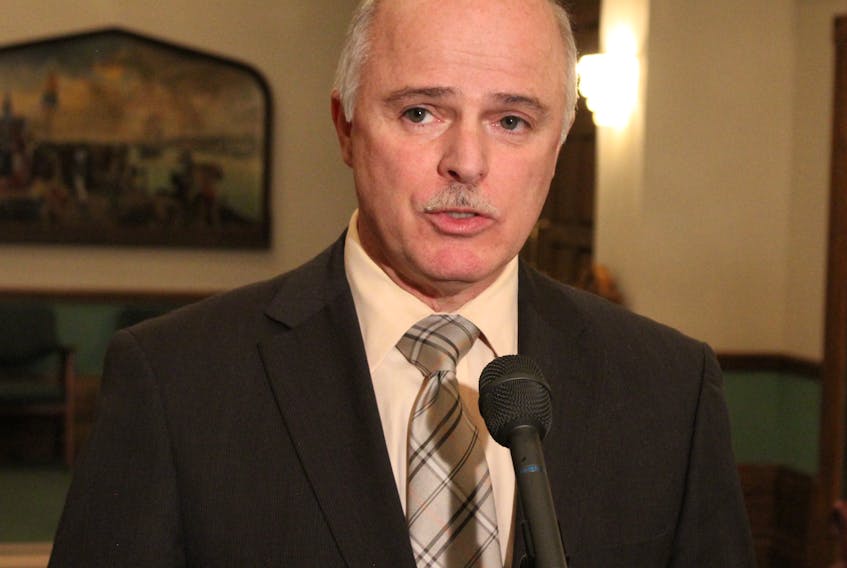ST. JOHN'S, N.L. — Finance Minister Tom Osborne on Thursday took a softer stance on returning to surplus by 2022-23 than has previously been communicated by the government.
“What I’m saying is, we’re still working towards returning to surplus,” said Osborne.
“I’m hoping we will.”
DBRS, one of the three credit rating agencies for the province, maintained its A (low) credit rating, with a stable trend outlook for the province.
“The province still faces challenges, but the fiscal crisis we were in in 2015-16, we’re moving away from that and moving into a more positive area." — Tom Osborne
In a news release, DBRS says work is being done to fix the province’s fiscal situation, but there are still risks facing the provincial government.
“Despite the significant progress in addressing the budget gap, the outlook remains challenging and requires further structural measures to recast the government’s expenditure profile and ease annual spending pressures,” reads the release.
“DBRS notes this outlook remains subject to downside risks, including the outlook for commodity prices and the possibility that the full costs of the Muskrat Falls project are not recovered through the electricity rate base. Regardless, DBRS expects the debt outlook to remain within an acceptable range for the current ratings.”
DBRS says an upgrade to the province’s credit rating is unlikely in the near future, but so is a further downgrade.
“A positive rating action would require (1) a sustained improvement in fiscal performance, (2) a declining debt-to-GDP ratio and (3) clarity about how costs related to Muskrat Falls will be recovered and the extent to which provincial subsidies will be necessary for electricity-rate relief,” reads the release.

“DBRS has already incorporated potential downside risks associated with Muskrat Falls and electricity rates into the rating. Consequently, a negative rating action is highly unlikely and would likely stem from a significant and sustained deterioration in the provincial economy.”
Osborne said the province’s financial state is not as bad as when the Liberals first took office, but the path to surplus remains a mountain to climb.
“Reaching surplus is challenging. We’re now in a minority situation, so it’s even more important that we make the right decisions on behalf of the people of the province, and not just political decisions,” said Osborne.
“The province still faces challenges, but the fiscal crisis we were in in 2015-16, we’re moving away from that and moving into a more positive area. There are still challenges. There’s still work to be done.”
Osborne said that despite the credit downgrade from Moody’s in July, borrowing for the coming budget was easier than in previous years.
“We’ve just done a recent round of borrowing, within the last couple of months. In fact, after Moody’s and just before Standard and Poor’s, and we actually got a better interest rate on that round of borrowing than we did in recent years,” Osborne said.
“When Moody’s changed their rating, they were higher than the other two. They brought the rating back, similar to the other two.”









